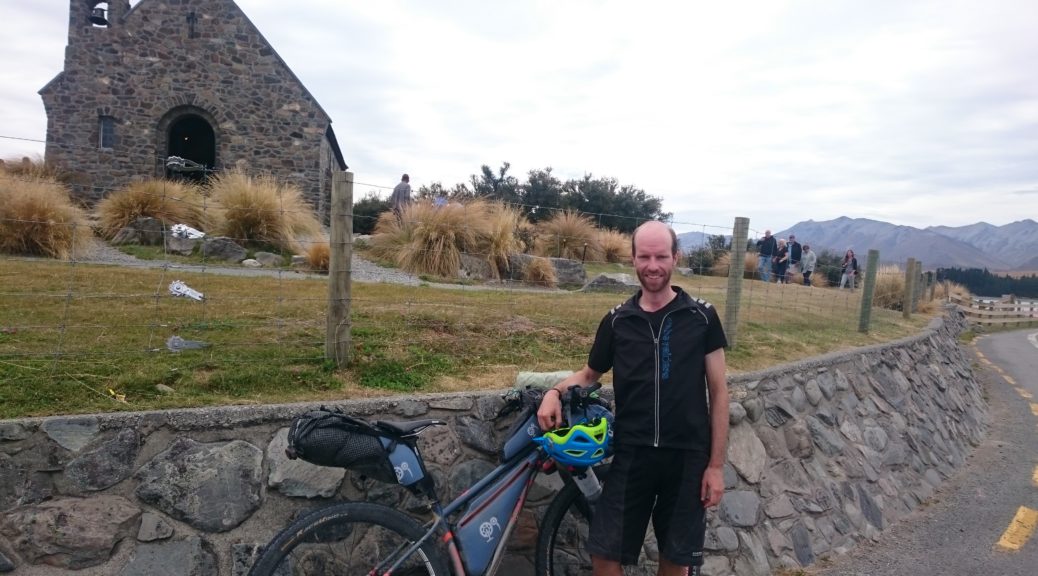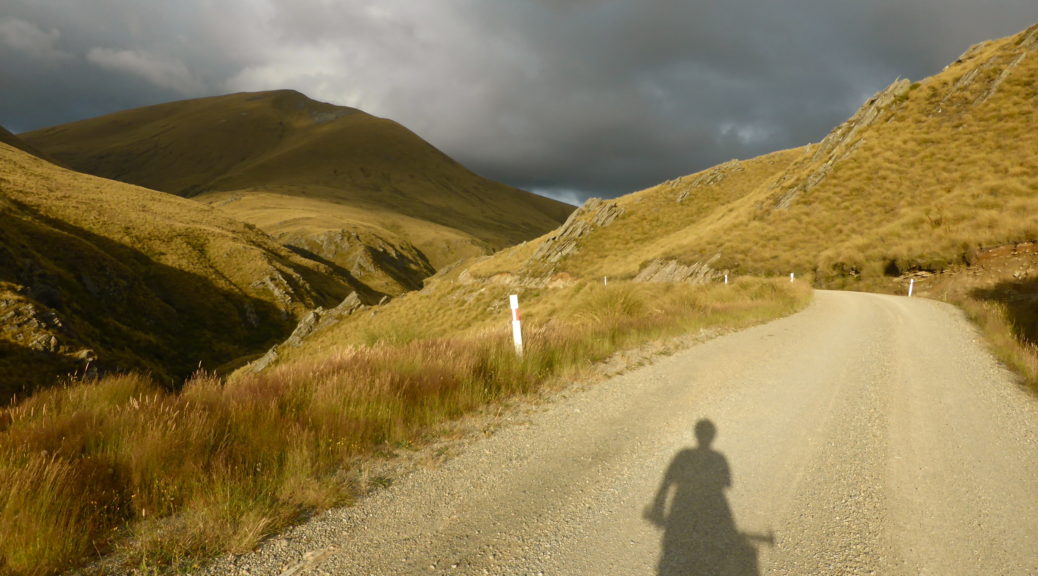Since moving to Hawke’s Bay near on four years ago, I’ve heard much of the long-established Triple Peaks event. It seemed to have a reputation as a punishing race (MTB or run) climbing three peaks (obviously) near Havelock North. As two of the peaks are on private land, this event is one of the few chances to ride all three. I fairly regularly ride up Te Mata Peak and had been fortunate enough to ride up Mt Erin with a group – which just left the tallest, Mt Kahuranaki, for me to check out.
Unfortunately the weather had been dire the previous two years, and with the Tukutuki River running too high the reserve course had to be used – removing Kahuranaki from the event. One of those years it was so wet, Mt Erin was removed too and the race just went up a very slippery Te Mata three times. Keen to see new places, I’ve always reserved my entry until the weather forecast was likely to allow exploring of somewhere new. This year was finally that time; I entered a few days beforehand.
The days leading up to race day were dry, so the river was low and the A-course was good to go. A little rain overnight before the start greased things up just a bit. It had been a long time since I’d done an actual race, and I certainly wasn’t in anything resembling race-mode (whatever that is) – I’d chosen my bikepacking bike and left the frame bag on so I could carry plenty of food for the fifty kilometres, which I hoped would take me about four to four and a half hours. I found a spot near the middle of the field as 120-odd riders waited for the seven-thirty start.
That wasn’t a great idea, I should back myself more, as climbing gently out of town on seal I eased past many people on much bigger bikes – bringing numerous comments about a motor being hidden in my frame bag. I was in no rush as we started the climb of Mt Erin on farm tracks. It certainly was greasy and at times, with the particular tyres I had, it was easier to get off and run through sections of mud and slop. At least I wasn’t on a cyclocross bike – that looked miserable.
Suddenly the track we had been following ended and the course had us carrying and pushing bikes up steep, slippery grass slopes. I wasn’t quite expecting this level of hike-a-bike, but without luggage my bike seemed very light – another bright side. Settling into the adventure, I admired the view over the Heretaunga Plains as it opened up.
 There was a camera, so I got back on my bike.
There was a camera, so I got back on my bike.
 I stopped longer to admire the view, and found the doctor to snap a picture of this close-to-home adventure.
I stopped longer to admire the view, and found the doctor to snap a picture of this close-to-home adventure.
The music emanating from near the transmission tower drew us closer. I may have stopped a while longer to listen a bit.
 Just your average piper and drummer on top of a hill at eight-thirty on a Saturday morning as scores of people rode and ran past.
Just your average piper and drummer on top of a hill at eight-thirty on a Saturday morning as scores of people rode and ran past.
Off Mt Erin on a rigid bike was just brutal. The tracks were rough enough, but crossing steep paddocks threw me all around and slowed me – plenty of people passed me. But that was only ten minutes of bouncing about before a winding trail through some riverside scrub led to the river crossing. With the Tukituki only knee-high, it was a fairly easy carry and rather nice to cool off a little. Through the aid station I’d no need to pause before a short section of road and farm track led to the bottom of Kahuranaki.
I was surprised when Shaun, a colleague and much stronger rider than me, caught up to me and chatted for a bit – surely he was well ahead of me. I’d not recognised him bent over repairing a flat at the bottom of Mt Erin. Climbing around the back of Kahuranaki was a steady gradient of ten percent, the surface was mostly good and I made steady progress. Nearing the summit, loud tunes were blasting down from a huge sound system – this was certainly motivating and took one’s mind off the climb. Cloud rolled in and it got quite misty very briefly, I enjoyed what of the view I could see. Only just below the summit did the hike-a-bike start, picking one’s way through boulders strewn down the slope.
 Another camera, time to hold onto mine and get back on the bike.
Another camera, time to hold onto mine and get back on the bike.
With a last scramble up to the trig and a tentative carry off the very peak, it was more bumpy crossing of pasture before finally reaching a well-maintained track. The descent turned fast and wild. Forty-one minutes up, thirteen down. It was fantastic fun; made somewhat exciting on the bi-directional part of the course where some people couldn’t grasp the concept of keeping left. Never mind, it was exhilarating weaving at pace through those hardly moving.
Through the river aid-station again, it was encouraging to hear a couple of familiar voices cheering above the rather loud drums (not of the highland variety). Another familiar face was a marshall at a point halfway across flatter farmland. It is nice to see such people unexpectedly in the middle of events. A stretch of quiet dead-end road had us continuing our route paralleling the river, before we turned away and sharply rose through another farm. More ten percent gradient and more pushing.
Back on the bike, we approached the final peak, Te Mata, from the opposite side to that which I am used to. Some familiar spots led to the Back Track, which is normally walking only. Well, going up, it was still walking only. More of a goat track, it was narrow and numerous switchbacks led up the steep slope. It was easy enough to push up it, but at almost twenty percent it was not a climb I’d be riding up anytime soon – I’d definitely not be able to negotiate the corners. I was happy with my progress and energy levels still, every so often I’d haul someone else in and then expect them to pass me on the descents – they didn’t anymore.
With time for a brief drink at the top, familiar trails beckoned me back to town and the finish. Still bumpy on MTB trails, I held on and pointed down. Thankfully we didn’t have to survive the original MTB track – there would have been significant carnage. Instead, flying down the road for a bit, we hit the flowy trails to Chambers Walkway, a brief bit of road and then some more singletrack before the final road section. To my surprise I still had plenty left to pedal hard and get back in four hours and eight minutes.
Even more startling was that I’d got home in tenth place in a field of a hundred and twenty. I wasn’t really expecting that, and perhaps should have not faffed around so much with photos and admiring the view. Never mind, it was a great morning out on the bike seeing new places and views. With far more hike-a-bike than expected, it certainly was a challenging ride – but I loved it and was proper impressed by such a well-run and iconic local event. Definitely worth the wait.


 Dawn wasn’t too bad either.
Dawn wasn’t too bad either. It really was a lovely morning, and the wind-gods must have felt sorry for me – there was little to contend with. The road curves left and climbs to the pass on the left of Mt Dalgety.
It really was a lovely morning, and the wind-gods must have felt sorry for me – there was little to contend with. The road curves left and climbs to the pass on the left of Mt Dalgety. It really was a nice day, Mt Cook and the Southern Alps hove into view.
It really was a nice day, Mt Cook and the Southern Alps hove into view. Finally, I reached the pass. Rather unhurried and tired, somehow sixty kilometres and 800 metres of climbing had taken five and a half hours! Never mind, it would be all downhill from here – surely.
Finally, I reached the pass. Rather unhurried and tired, somehow sixty kilometres and 800 metres of climbing had taken five and a half hours! Never mind, it would be all downhill from here – surely. Yes, a long downhill!
Yes, a long downhill!

 The weir, the road we’d just ridden and out over the upper Maniototo Plain.
The weir, the road we’d just ridden and out over the upper Maniototo Plain. Jake powering ahead again.
Jake powering ahead again. There was of course a steep climb waiting for us through Rocklands Station.
There was of course a steep climb waiting for us through Rocklands Station. Bacon and egg pie, broccoli salad, green salad, couscous salad, two spinach & feta parcels, tea for two, a chocolate milkshake and bottles of water…
Bacon and egg pie, broccoli salad, green salad, couscous salad, two spinach & feta parcels, tea for two, a chocolate milkshake and bottles of water… That didn’t last long.
That didn’t last long.
 Joining the rail trail at Hyde.
Joining the rail trail at Hyde.

 From our napping vantage point, Poolburn Reservoir.
From our napping vantage point, Poolburn Reservoir. It was a house to us.
It was a house to us.